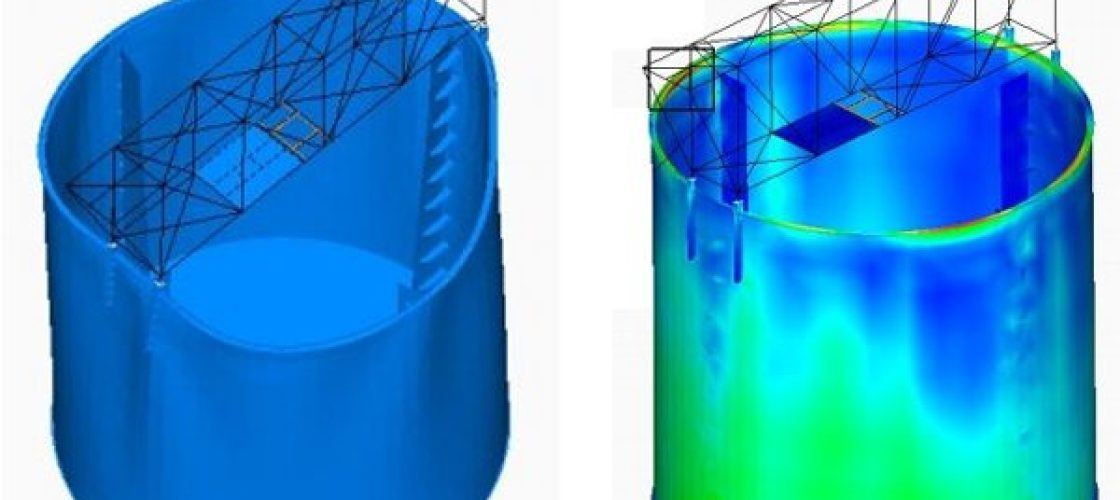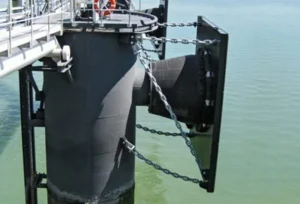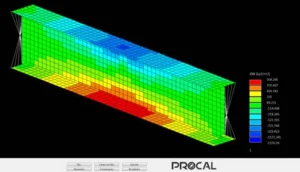Introduction
Metal tanks are constantly used in petrochemical industry processes. Tanks can be used for mixing processes, homogenization, mechanical separation, chemical reactions, aeration and final product storage, among other applications.
The tanks are made from flat steel sheets, which are shaped to the desired radius and welded using an automated and/or manual process. In the case of large tanks, transportation is unfeasible, so construction is carried out at the installation site. The welds made in this case are field welds.
It is relatively common for distortions and warping to occur in the side plates, but depending on their severity, the tank's conditions of use can be jeopardized, in addition to the risk of structural collapse.
Distortions in the side plates can be permanent or only arise under certain loading conditions. The support conditions of the shell plates on the foundation slab can cause distortions in the shell due to differences in rigidity. Differential settlements can also cause distortions in the side plates of large tanks.
Vibrations in process tanks
Metal tanks can be fitted with mechanical devices such as agitators. Normally, in open tanks, these devices are installed by means of platforms at the top of the tank, in order to support the mechanical drives, valves and other devices required for the process.

Figure 1 - Distortion of the side of a process tank (left) due to equipment platform loads, stress distribution (right).
Due to the characteristics of tank sides, which are made of thin sheets, there is a great variation in circumferential rigidity with the addition of equipment platforms. In certain situations, high levels of vibration are observed, mostly when the tank is at a low liquid level. In these cases, the rigidity of the tank is lower, because the volume of liquid in the tank pulls on the plates, and is a stabilizing load that gives the side rigidity. However, the greater volume of liquid increases the participating mass, or modal mass, so that there may be an opposite effect, which is to reduce the natural frequencies.
In addition to the stiffness and mass aspect, the volume of liquid modifies the damping in the dynamics of the tank. Depending on the characteristics of the fluid inside, such as agitation, vortices and the flow pattern in the tank, exciting forces can arise which cause vibrations in the shell structures.

Figure 2 - Internal view of a process tank with a rocking agitator - note the baffles to provide greater agitation of the fluid.
Dents in metal tanks
It is common to see dents in the sides of low volume tanks, which disappear as the volume of liquid increases due to the tensile forces acting on the side. However, dents must be studied carefully to determine their causes.
In the case of welded tanks, which make up practically all large tanks, dents can be caused by residual stresses due to the welding manufacturing process.
The process of manufacturing the side by forming adds high residual stresses. Originally, the rolled sheet used for the side is flat, cut into a rectangular shape, and is forced during manufacture into the radius of the tank, being welded all the way around in the desired final position. In this case, the tendency of the plate is to return to its original flat shape, which adds compressive stress to the side and can result in localized dents. In tanks with a smaller radius, the plates are usually calendered beforehand, reducing residual compression stresses.
The weld bead adds local rigidity to the plate, both geometrically, due to the thickness of the weld reinforcement, and from the point of view of mechanical strength, since the deposited material has greater strength than the base metal. Following this reasoning, the preferred place for dents to appear is in the middle of the sheet, given the greater rigidity provided by the weld beads on the contour of the sheet.
Dents and other damage to the side can also be caused by the start/stop forces of mechanical drives in the case of process tanks, so the static check becomes particularly important for these loading cases.
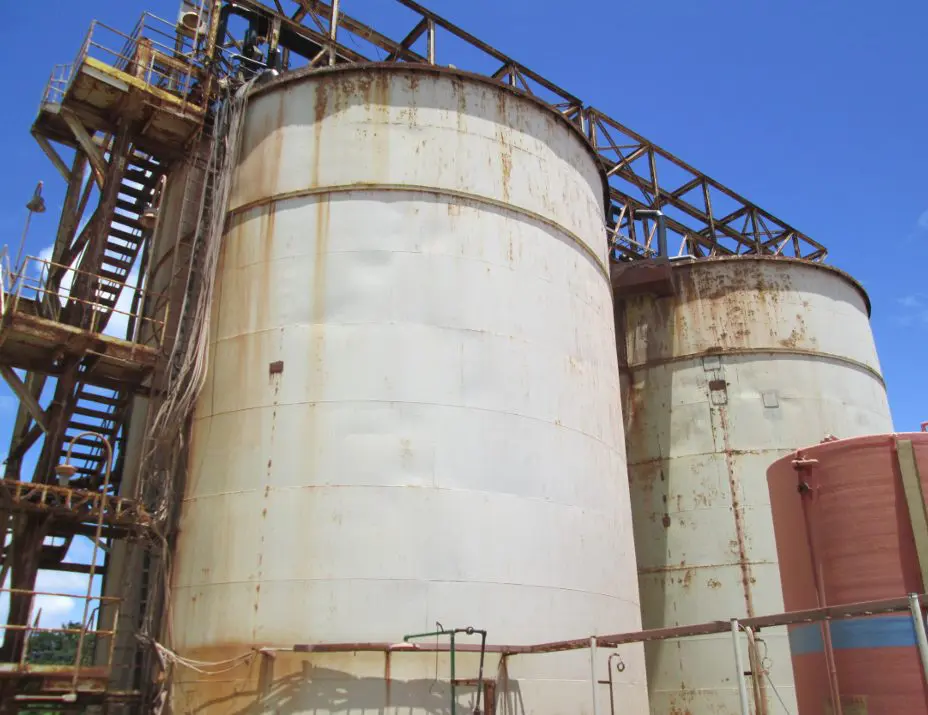
Figure 3 - Large process tank with dents in the side.
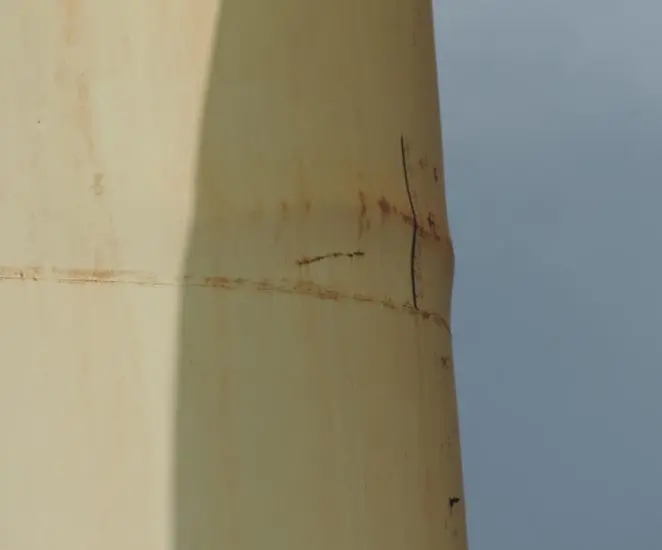
Figure 4 - Dent located in a process tank.
Corrosion damage
Corrosion damage to tanks is common. The severity of corrosion varies depending on the type of construction material (metal alloy), exposure to environmental conditions (acid rain, for example), the presence of moisture in the base and the condition of the paint on the side.
During design, it is common to add extra thickness so that the tank maintains its service conditions for a long time, even if it loses thickness due to corrosion. It is common for corrosion to start in the lower part of the tank, in the reinforcement angles of the upper ring, areas where water may accumulate. The area around the manhole doors, and the welds around them, are also points where there are gaps between the plates and fasteners of the covers, favoringcrevice corrosion.
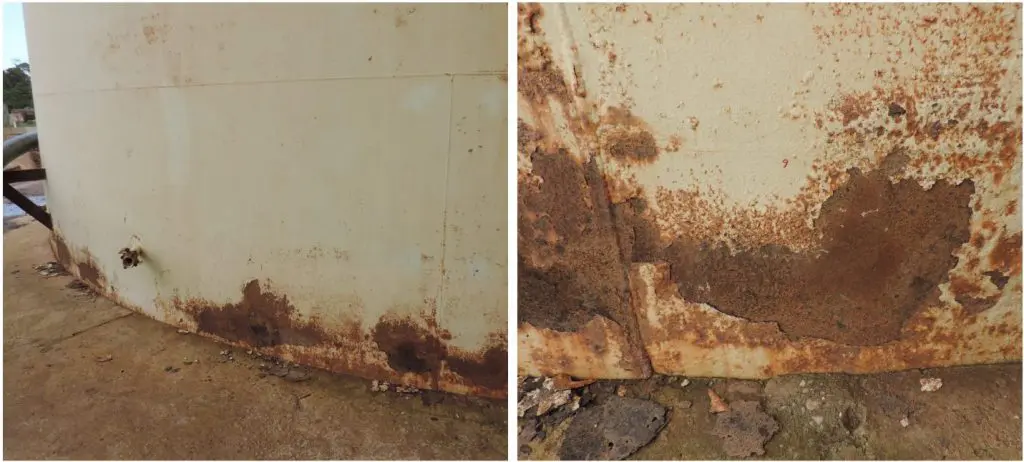
Figure 5 - Severe corrosion damage to the underside of the side near the bottom slab.
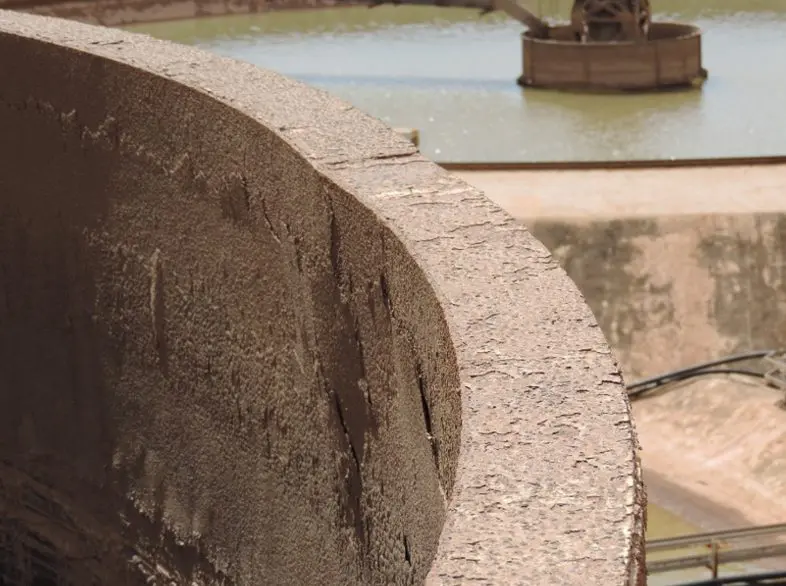
Figure 6 - Corrosion damage to the tank's upper reinforcement ring.
In order to predict the useful life of a tank, stress analyses can be carried out considering the thickness of the original design and the condition with a reduction in the thickness of the shell plates. It should be noted that abrasion caused by fluid flow inside the tank can be a contributing factor to the reduction in thickness, which is particularly important in slurry tanks, which are very common in pipeline installations.
Thickness reduction due to corrosion of the side plates can cause localized distortions.

Figure 7 - Analysis of stresses in a metal tank - increase in stresses with the reduction in thickness due to corrosion over the years.
Side distortions
In situations where the tank's upper ring is not properly reinforced, severe distortions can occur, which can make the tank unusable.
During the tank construction process, this condition is critical, as the rings in the upper part, which are thinner, are first assembled and then jacked up for the insertion of the new ring. This process is repeated for each plate that makes up the tank's rings, and maintaining the stability of the plates in this construction process is a challenge. The construction process must always be carried out with topographical monitoring in order to guarantee the verticality of the side and the stability of the plates.
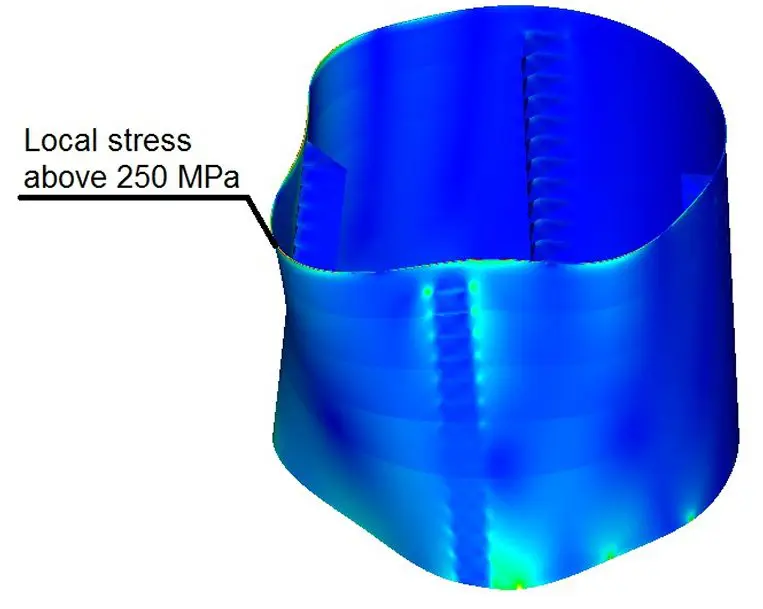
Figure 8 - Distortion of the side of a tank with a diameter of 18 meters.
The example above illustrates a model analysis of a tank that had severe distortion of the side during the installation of the last ring. In this case, the tank was not yet bonded to its bottom plate, so there was a process of gradual distortion of the lower ring, forming a kind of spout at the top of the tank. The distortion was so severe that the tank became unfeasible.
The use of stiffeners and/or locking bars may be necessary to control the distortion of the bottom ring during the tank manufacturing process, in order to guarantee the stability of the structure without the bottom plate, which has a function of restricting the distortion of the bottom ring.
Kot Engenharia has the experience and resources needed to carry out simulations on tank sides and evaluate problems such as those described in this article. Contact our team for more information!
Follow our pages on LinkedIn, Facebook e Instagram to keep up with our content.
